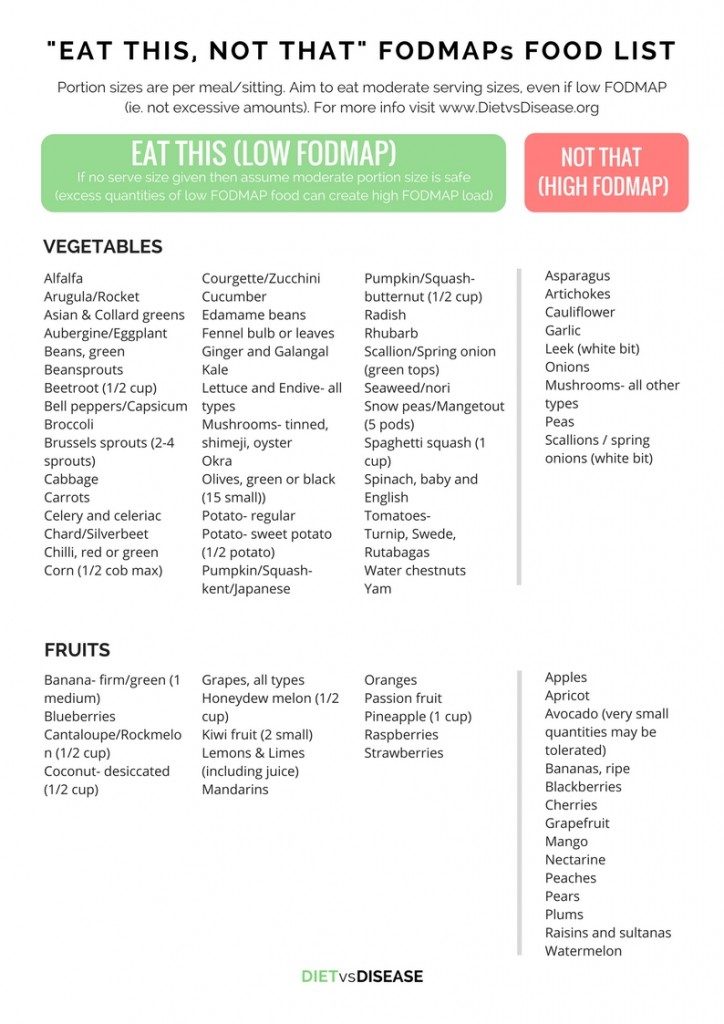
The Diverticulitis Diet Food List Jessica Michaels 9781658971850
Most people with diverticulosis and diverticular disease should follow a high-fibre diet. This can help to keep your poo soft and easy to pass and reduce the pressure in your large bowel. It can also help to ease symptoms you may already have, such as bloating, constipation, diarrhoea (the runs) and pain. High-fibre foods include vegetables.

Printable Diverticulosis Diet Handout Customize and Print
The low-FODMAP diet was developed to help people with irritable bowel syndrome (IBS). However, some experts suggest that it may help people with diverticulitis by decreasing or preventing high pressure in the colon. Vegetables: Onion, garlic, mushrooms, peas, asparagus, cauliflower, artichoke, Brussels sprouts.

Pin by Anita Kempf on FODMAPs Fodmap diet, Low fodmap diet recipes, Fodmap
Diet for Diverticulosis. Eat a high-fiber diet when you have diverticulosis. Fiber softens the stool and helps prevent constipation. It also can help decrease pressure in the colon and help prevent flare-ups of diverticulitis. Bran, whole wheat bread and whole grain cereals such as oatmeal.

Diverticulitis Diet, Andrew Weil blog
Foods to Avoid with Diverticulitis. Cater says during a bout with diverticulitis, the doctor may recommend modifications to your diet, including a temporary hold on fiber intake while the irritation resolves. For instance, depending on how severe the flare-up is, your doctor may recommend one of the following:
36+ Wahrheiten in Foods To Avoid With Apixaban! Gout is a type of joint inflammation that occurs
Constipation may occur from a high fibre diet without enough fluid, therefore drink plenty of fluid - at least 6-8 cups or glasses per day of water, tea, coffee, squash, and fruit juice etc. Low Fibre diet to manage Diverticular Disease with symptoms Traditionally, patients with Diverticular Disease have been advised to follow a high fibre diet

Printable Diverticulosis Food Diverticulitis Food Chart
For milder cases of diverticulitis, eat a low-fiber, or GI soft, diet. A low-fiber diet limits fiber intake to between 8 and 12 grams of fiber, depending on the severity of the flare-up. Grains.

West Sussex Colonics Yeast Free Diet Sheet
Diverticulitis is a condition associated with diverticular disease. It occurs when the diverticulum becomes inflamed or infected causing constant severe pain and fever. When inflammation and infection occurs, it may be necessary to take antibiotics and painkillers. This diet sheet aims to give dietary advice for managing episodes of diverticulitis.

Low Fiber Residue Diet Recipes Best Culinary and Food
Fiber is a component of complex carbohydrates that the body cannot digest, is found in plant based foods such as fruits, vegetables, whole grains, etc. Fiber promotes regular bowel movements and keeps stools soft and bulky. When there is not enough fiber in the diet, stools become hard and could be difficult to pass through the colon.

30+ Best meal plan for diverticulitis ideas
High fiber foods include: beans and legumes, such as navy beans, chickpeas, lentils, and kidney beans. whole grains, such as brown rice, quinoa, oats, amaranth, spelt, and bulgur. vegetables.

Food list for diverticulitis diet nutritionfoodlist
What is diverticular disease? Diverticular disease is when small pockets develop in the lining of the large bowel. These pockets can become inflamed or infected. This can cause symptoms such as diarrhoea, constipation, abdominal pain and bloating. This is called diverticulitis.

Diet Sheet for Diverticulitis Diverticulitis diet, Diverticulitis, Diet
A diverticulitis diet is something your doctor might recommend as part of a short-term treatment plan for acute diverticulitis. Diverticula are small, bulging pouches that can form in the lining of the digestive system. They're found most often in the lower part of the large intestine (colon). This condition is called diverticulosis.

Diet Sheet For Diverticulitis
Research suggests that a diet low in fiber and high in red meat may increase your risk of getting diverticulitis — inflammation of one or a few pouches in the wall of your colon. Eating high-fiber foods and eating less red meat may lower the risk. The Dietary Guidelines for Americans, 2020-2025, recommends a dietary fiber intake of 14 grams.

Pin on Diverticulitis Diet
It is unclear what exactly causes diverticula to develop however certain factors may increase your risk such as: • Increasing age, usually being 40 years old or older. • Smoking. • Family history of diverticular disease. • Being overweight or obese. • Diet inadequate in fibre.

Printable Diverticulosis Diet Handout Customize and Print
Don't miss out on the latest news on how to help diverticulitis yourself. Learn More About How to Manage Your Diverticulitis Naturally.

The Best Diverticulitis Diet Splitting Fact From Fiction Diet vs Disease Diverticulitis
If these pouches or diverticula become infected or inflamed then it is known as diverticulitis. It is a relatively common condition in the developed world affecting around 30% to 50% of people during their lifetime.. Dietary treatment of diverticular disease with a high fibre diet: The following table gives some examples of high fibre foods.

Printable Diverticulosis Diet Handout Customize and Print
Diverticular disease and diverticulitis are conditions that affect the large intestine (bowel), causing tummy (abdominal) pain and other symptoms. They're caused by small bulges or pouches in the walls of the intestine called diverticula. Diverticulosis is when there are diverticula in your bowel, but they're not causing any symptoms.